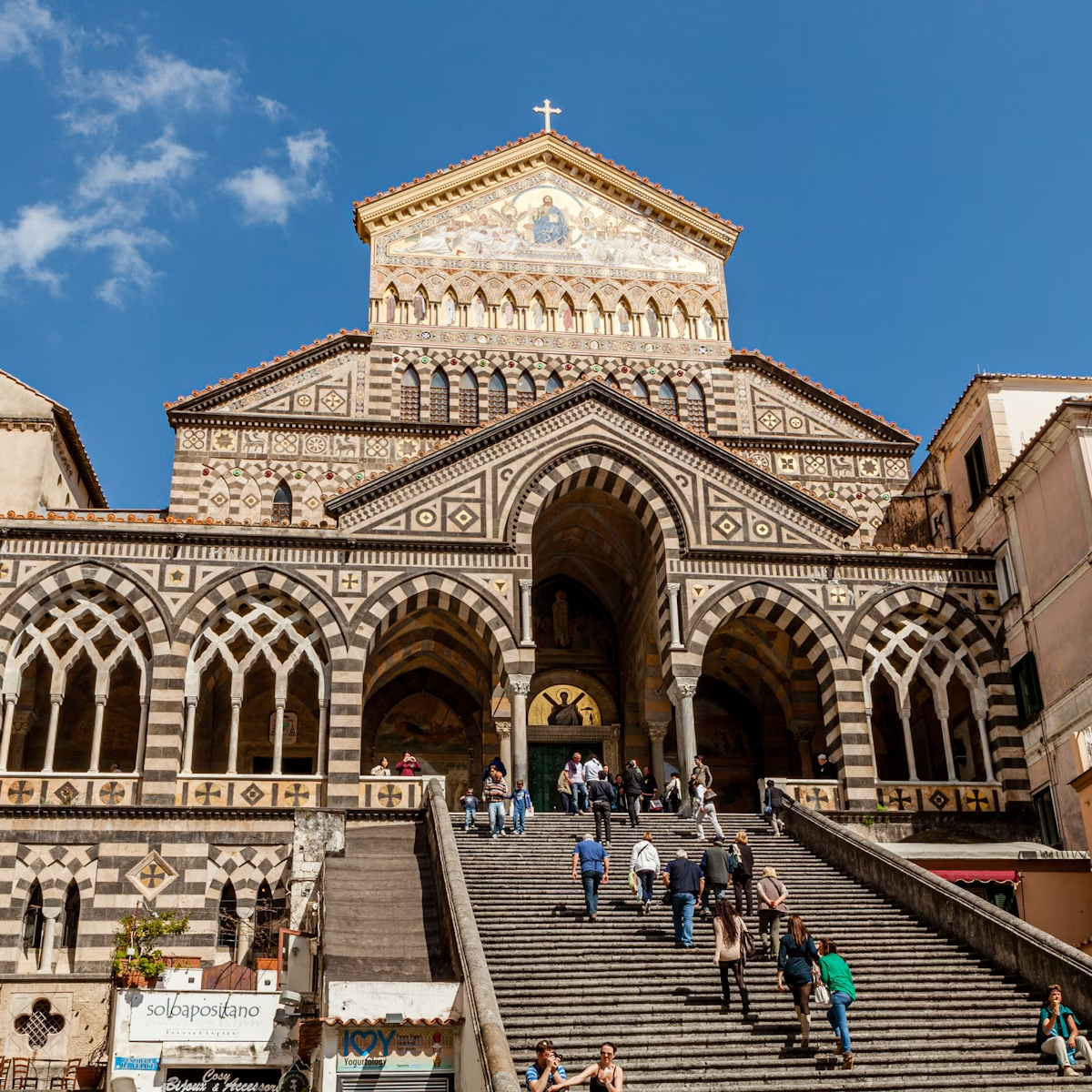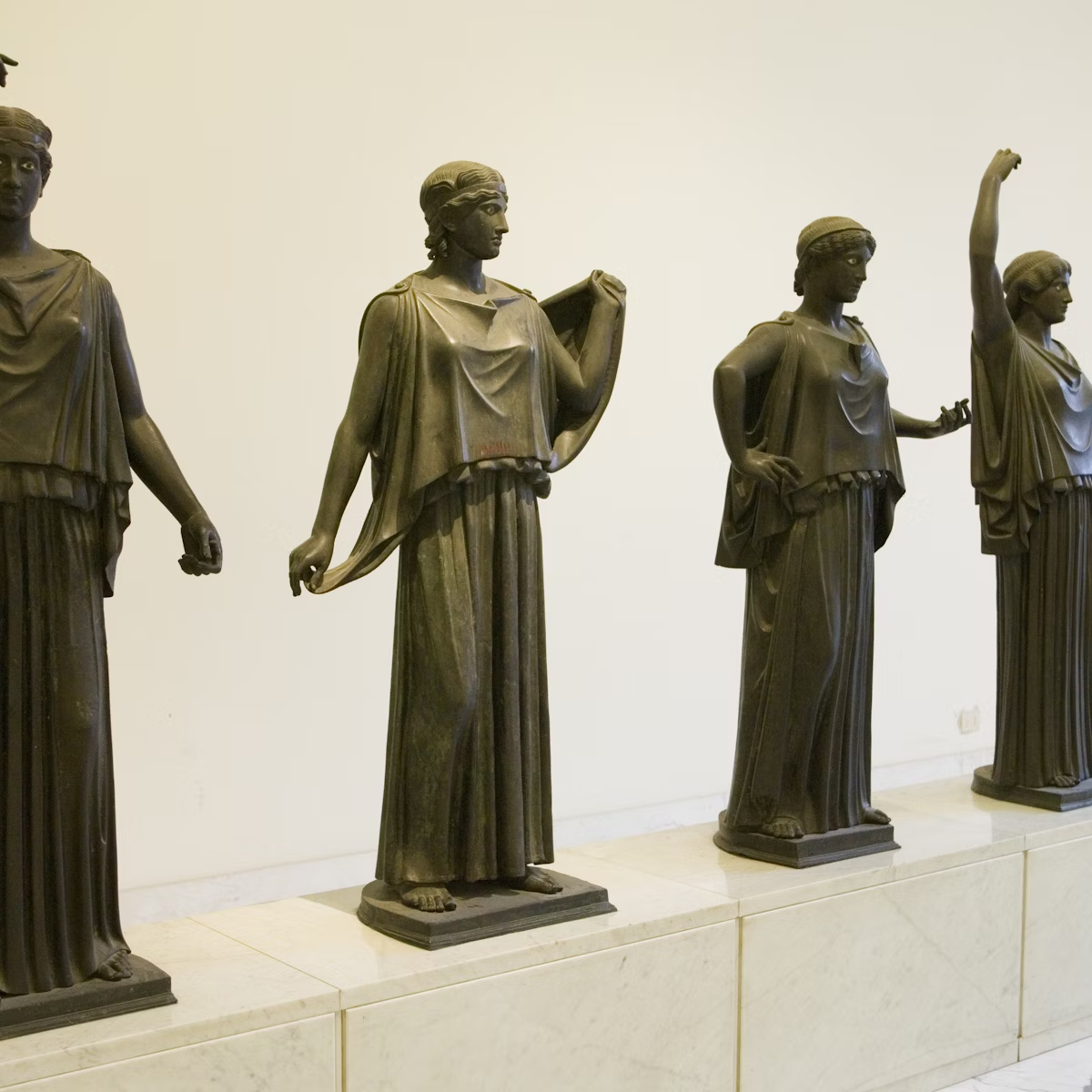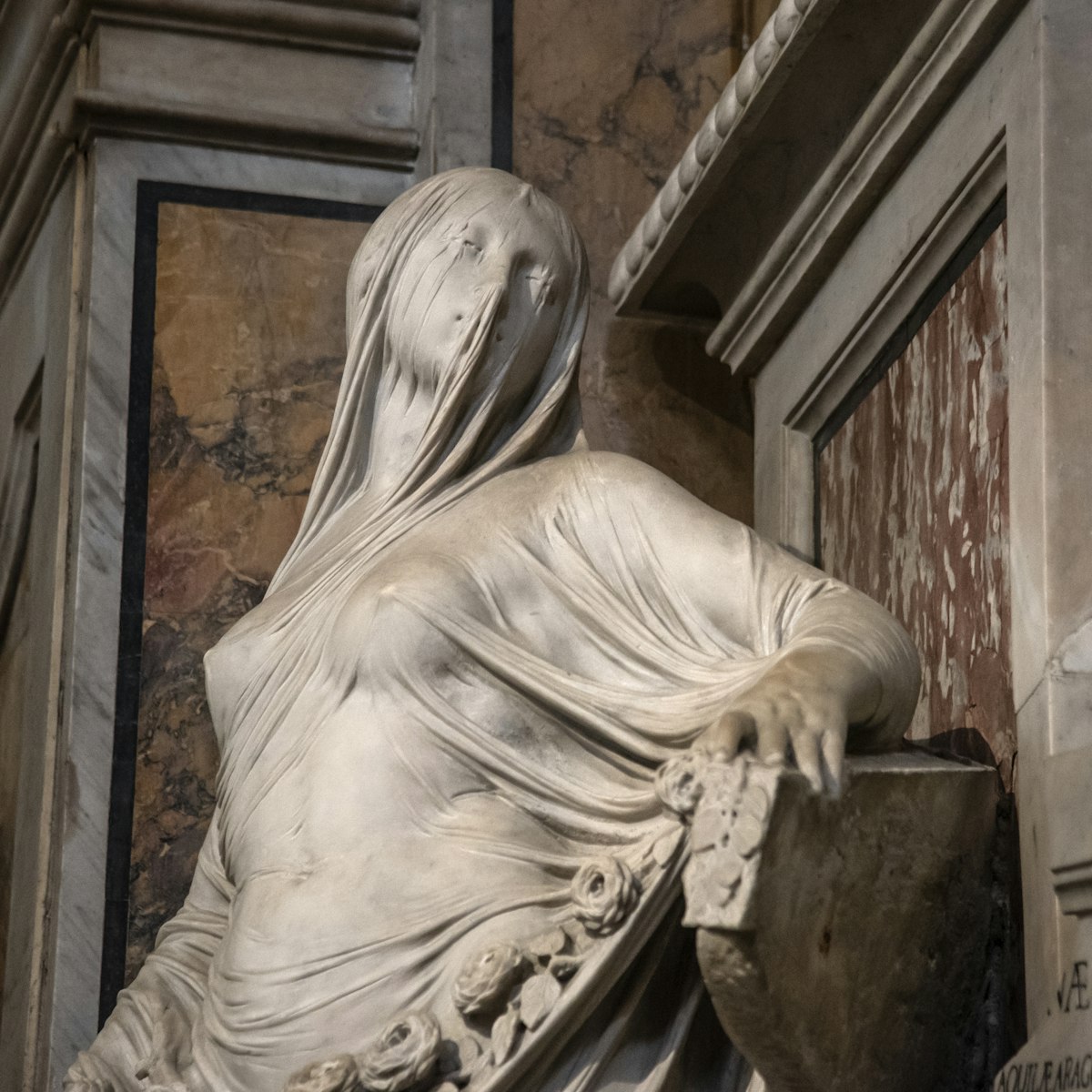While we love the baroque paintings by Andrea Vaccaro and Luca Giordano – not to mention the two contemporary sculptures by Riccardo Dalisi – it's the eerie, one-of-a-kind catacombs beneath this 17th-century basilica that makes the place so utterly unforgettable. Entered through the 5th-century cripta (crypt) below the high altar, its damp walls reveal a rather macabre method of medieval burial.
First, bodies would be stored in the arched wall niches, where the schiattamorti (literally 'corpse squashers') would poke them to release all blood and bodily fluids. Once dried out, the body would be buried, while the skull would be cemented to the wall and set over a fresco of the dearly departed. These frescoes are clearer than ever thanks to recent restoration work. The skull positioned above a frescoed body depicted with paintbrushes and a ruler belonged to 16th-century mannerist painter Giovanni Balducci. The Florentine artist had struck a deal with the Dominicans – in return for decorating their catacomb free of charge, they would allow him to be buried here (considered a privilege at the time).
Another fascinating feature is the so-called Trionfo della croce (Triumph of the Cross) mosaic. Created in the 5th or 6th century, its earthy tones and unusually large lambs suggest that the artist hailed from Africa. The African connection continues with the catacomb's namesake, San Gaudioso, a North African bishop who died in Naples in AD 452 and was buried on this site.
In the crypt itself, scan the walls for an intensely colourful 9th-century fresco of the Madonna and Child flanked by figures believed to be St Gregory and St Marciano. The image was discovered in the 1990s beneath a 19th-century fresco.
Catacomb guided-tour tickets can be purchased online or at the basilica.







